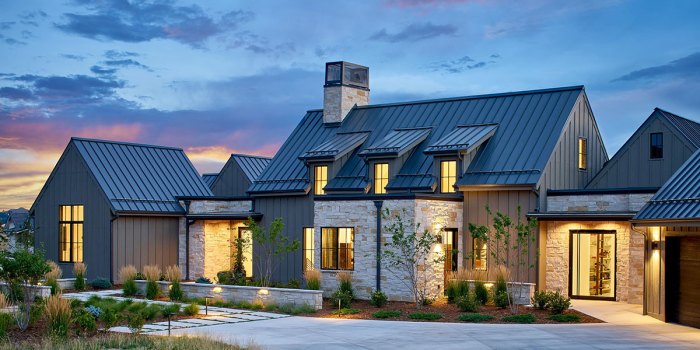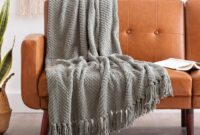Transitional style for modern homes seamlessly blends traditional and contemporary elements, creating a unique and timeless look that is sure to captivate any homeowner. From color palettes to furniture selection, this style offers a perfect balance between old-world charm and modern sophistication. Dive into the world of transitional design and discover how you can transform your living space into a harmonious blend of past and present.
Defining Transitional Style: Transitional Style For Modern Homes

Transitional style in interior design combines elements of traditional and contemporary styles to create a harmonious and timeless look. It aims to bridge the gap between classic and modern aesthetics, resulting in a balanced and sophisticated space.
Key Characteristics of Transitional Style
- Neutral color palette: Transitional interiors often feature neutral colors such as beige, grey, and ivory, creating a calming and versatile backdrop for the space.
- Mix of materials: A combination of different materials like wood, metal, and glass is common in transitional design, adding texture and visual interest.
- Comfortable and inviting: Furniture in transitional style is comfortable, with plush seating and soft textures to create a cozy atmosphere.
- Balance of old and new: Transitional design seamlessly blends traditional elements like crown molding and contemporary pieces like clean-lined furniture for a balanced look.
- Subtle patterns: Transitional spaces may incorporate subtle patterns like stripes, geometric shapes, or florals to add depth without overwhelming the space.
Examples of Transitional Style in Modern Homes
Transitional style can be seen in modern homes through the use of a mix of classic and contemporary furniture pieces, such as a traditional tufted sofa paired with sleek metal coffee tables. Additionally, neutral color schemes with pops of color, layered textures like a plush rug over hardwood floors, and a blend of modern and vintage accessories all contribute to the transitional aesthetic.
Color Palette and Materials
:max_bytes(150000):strip_icc()/transitional-design-ideas-3-bespoke-only-wilton-a95faa62a93c454583162a94d1f92118.jpeg?w=700)
When it comes to transitional style for modern homes, the color palette plays a crucial role in achieving a harmonious and balanced look. Neutral tones are commonly used as the base colors, such as whites, creams, beiges, and grays, creating a serene and versatile backdrop for the space. These neutral hues are often paired with pops of color like soft blues, greens, or earthy tones to add warmth and depth to the room.
Popular Color Palettes
- Neutral Tones: Whites, creams, beiges, and grays are commonly used as the base colors in transitional style.
- Pops of Color: Soft blues, greens, earthy tones are often added to bring a touch of color and personality to the space.
- Metallic Accents: Gold, silver, and bronze metallic accents can be incorporated to add a touch of glamour and sophistication to the design.
Materials in Transitional Style
In transitional style, a mix of materials is often used to create a balanced and inviting space. Common materials include wood, metal, glass, and natural fibers like linen and cotton. These materials add texture and visual interest to the room, enhancing the overall aesthetic. When choosing furniture and decor pieces for a transitional space, it’s essential to select high-quality materials that are both durable and timeless.
Tips on Choosing Materials and Colors
- Consider the Function: Choose materials that are both stylish and practical for your lifestyle and needs.
- Mix and Match: Don’t be afraid to mix different materials to add depth and character to the space.
- Stick to a Cohesive Palette: Ensure that the colors and materials you choose complement each other and create a harmonious look.
- Invest in Quality Pieces: Opt for well-made furniture and decor items that will stand the test of time and retain their appeal.
Furniture Selection
When it comes to selecting furniture for modern homes with a transitional style, it’s important to strike a balance between traditional and contemporary elements. This style blends the warmth of traditional design with the clean lines of modern aesthetics, creating a timeless and inviting look for your space.
Types of Furniture
In transitional interiors, you’ll often find furniture pieces that feature a mix of materials such as wood, metal, and glass. Some common types of furniture used in transitional style include:
- Neutral-colored sofas with clean lines and simple silhouettes
- Wooden coffee tables with a mix of traditional and modern design elements
- Upholstered chairs in soft fabrics like linen or velvet
- Simple, yet elegant dining tables with a combination of wood and metal accents
- Storage pieces like chests or cabinets with interesting hardware details
Mix and Match Strategies
To create a cohesive and balanced transitional look, consider mixing and matching furniture pieces from different styles. For example, pair a modern leather sofa with a traditional wooden coffee table. Incorporating a variety of textures, finishes, and shapes can add visual interest to your space while maintaining a harmonious overall look.
Importance of Clean Lines and Comfort
Clean lines are essential in transitional style furniture to achieve a modern and uncluttered look. Opt for furniture pieces with simple, straight lines and minimal ornamentation to create a sleek and contemporary feel. Additionally, comfort is key when selecting furniture for modern homes with a transitional style. Look for plush cushions, soft fabrics, and ergonomic designs to ensure that your furniture is not only stylish but also inviting and comfortable for everyday use.
Décor and Accessories

When it comes to decorating transitional style homes, incorporating the right décor and accessories is key to achieving a seamless blend of traditional and modern elements. By carefully selecting rugs, artwork, and lighting, you can create a harmonious balance between minimalism and warmth in your transitional style decor.
Incorporating Decorative Elements, Transitional style for modern homes
- Choose rugs with neutral colors and simple patterns to anchor the space without overwhelming it.
- Select artwork that combines traditional and modern elements, such as landscapes with a contemporary twist or abstract pieces with classic frames.
- Opt for lighting fixtures that feature clean lines and a mix of materials, like metal and glass, to add a touch of sophistication to the space.
Blending Traditional and Modern Decor Accessories
- Mix traditional decorative accessories, such as antique vases or ornate mirrors, with modern accents like geometric sculptures or sleek candle holders.
- Pair vintage rugs with contemporary furniture pieces to create a visually interesting contrast in the room.
- Consider incorporating a combination of textures, such as velvet throw pillows on a leather sofa, to add depth and warmth to the decor.
Creating a Harmonious Balance
- Aim for a clutter-free look by carefully curating your decorative items and avoiding overcrowding the space.
- Use a neutral color palette as a base and add pops of color through accessories like throw blankets or accent pillows.
- Introduce natural elements, such as plants or wooden accents, to bring a sense of warmth and coziness to the room.
In conclusion, Transitional style for modern homes offers a versatile and elegant design approach that can elevate any living space. By carefully selecting the right colors, materials, furniture, and decor elements, you can achieve a cohesive look that exudes both comfort and style. Embrace the beauty of transitional design and create a home that is truly a reflection of your unique taste and personality.
When it comes to vintage style home décor , think of bold colors, intricate patterns, and unique furniture pieces to create a nostalgic atmosphere in your space. Incorporating vintage items like retro posters, antique mirrors, and old-fashioned lamps can add character and charm to any room.
If you’re looking to create a Scandinavian living room , opt for a clean, minimalist design with neutral colors, natural materials, and cozy textures. Add touches of nature with potted plants and light wood furniture to achieve the perfect balance of warmth and simplicity in your decor.
For minimalist home design tips , focus on decluttering your space, using simple furniture pieces, and maximizing natural light. Embrace a less-is-more approach by incorporating sleek lines, monochromatic color schemes, and functional accessories to create a clean and serene environment in your home.




